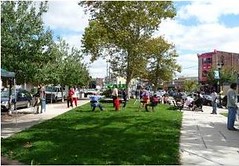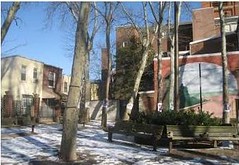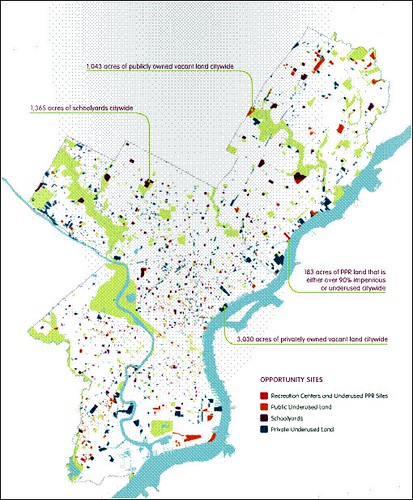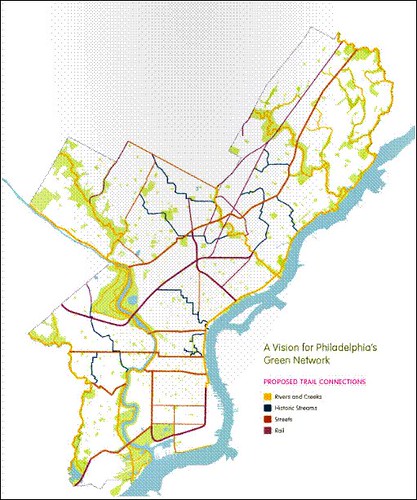Philadelphia will add new neighborhood-scale parks as part of ambitious green vision

Posted December 10, 2010 at 1:27PM
I have long thought it more important that we have neighborhood parks within convenient reach of people than that we have large city parks (though it's nice to have both). I was impressed, for example, when the residents of the South Bronx neighborhood now known as Melrose Commons, a LEED-ND pilot project, reframed a proposal for a large park into distributed smaller parks within the community.
Philadelphia is now adopting this approach as policy. The city “has developed a plan to convert its huge holdings of vacant lots and  asphalt-covered school yards into tree-shaded greens, in a low-cost effort to satisfy a 2009 pledge to add 500 acres of parkland,” writes Inga Saffron in The Philadelphia Inquirer. “Instead of building a few large destinations for recreation, the city would establish an archipelago of green oases on scraps of land, some as small as a quarter acre.” Much of the land is already owned by the city.
asphalt-covered school yards into tree-shaded greens, in a low-cost effort to satisfy a 2009 pledge to add 500 acres of parkland,” writes Inga Saffron in The Philadelphia Inquirer. “Instead of building a few large destinations for recreation, the city would establish an archipelago of green oases on scraps of land, some as small as a quarter acre.” Much of the land is already owned by the city.
The new plan, called Green2015, sets an initial goal of creating 500 acres of new, neighborhood-based parks in the next four years. According to the executive summary, more than half of Philadelphia’s residents currently do not have access to a park within convenient walking distance. But there are 558 acres of publicly owned, vacant land located in underserved neighborhoods, and a larger inventory citywide of over 1,000 acres of publicly owned vacant land, over 1,000 additional acres of schoolyards that could be multi-purposed, and over 3,000 acres of additional vacant land currently in private ownership, identified in the map below left as “opportunity areas.” The map on the right shows proposed new trails, bike lanes, and “creek walks” in the city.
The plan stresses the provision of neighborhood green space that is "clean, safe and ready to use." There will be no acquisition costs associated with the parcels already in public ownership, and the city hopes to create innovative partnerships that can reduce long-range maintenance. The plan lists a range of public benefits associated with Green2015, including removing blight, creating recreational opportunities, absorbing stormwater, reducing heat from pavement, enhancing public health, strengthening communities, assisting revitalization efforts, raising property values, and creating green jobs. The executive summary estimates that one result will be the avoidance or absorption of up to 1.5 billion pounds of carbon dioxide emissions annually, the equivalent of removing over 3,000 vehicles from Philadelphia streets.
 In addition to creating neighborhood parks from public property holdings, the city also hopes to catalyze the conversion of underutilized land in private ownership to usable green space.
In addition to creating neighborhood parks from public property holdings, the city also hopes to catalyze the conversion of underutilized land in private ownership to usable green space.
Green2015 is a component of a broader (and highly recommended) city vision called Greenworks Philadelphia, which includes among its sustainability goals to “provide park and recreation resources within 10 minutes of 75 percent of residents.” That is exactly the right way to think of park distribution, in my opinion. The very ambitious Greenworks, described by the city as “a six-year plan to make Philadelphia the greenest city in America,” is probably worthy of its own blog post. Green2015 certainly looks like a worthy part.
Here’s a short video of news coverage about the unveiling of Green2015:
Move your cursor over the images for credit information.

